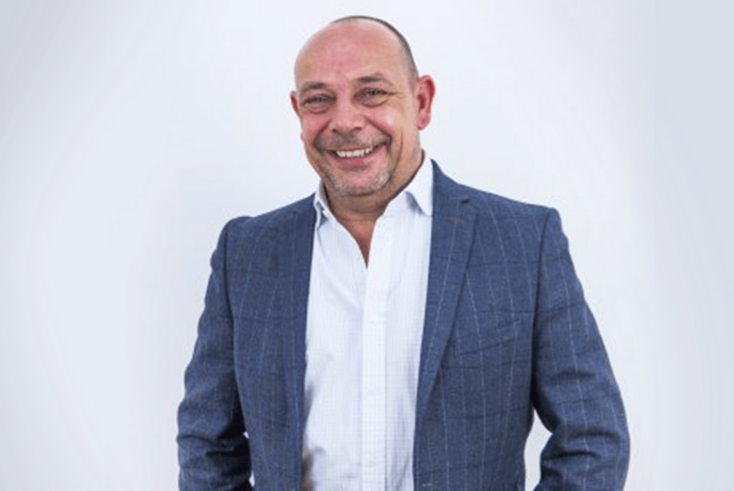Five questions with: Richard Reeves, MD at the UK Association of Online Publishers (AOP)

Richard Reeves, managing director at the Association of Online Publishers (AOP) talks accelerated trends, D&I, collaborations and reveals a secret about himself
For the first time since the financial crisis of 2009, the digital ad market only saw single-digit growth last year. In the context of Covid, how are online publishers feeling?
Firstly, we have to look at the numbers in greater detail. Premium publishers make-up only part of that picture. They have actually been dealing with a steady decline in display revenue for years. As such, they have been weaning themselves off a dependency on advertising revenue by innovating through other monetisation strategies, most notably subscriptions, which continue to experience growth.
That said, looking back over the last year, we can echo recent trends in advertising spend, with a buoyant Q1 2020, followed by a collapse in Q2.
What was encouraging, however, was the recovery across Q3 and Q4, where for the first time in a long time, revenue from display advertising increased by 16.8% in Q4 2020, according to AOP and Deloitte’s Digital Publishers Index Report.
What are the challenges that lie ahead for publishers? Are they predominantly the same as before 2020 or do they now face different challenges, based on evolved consumer behaviours?
While many of the same challenges remain – including rising migration of audiences towards social media platforms, transparency in the supply chain, and the continuing advertiser trend towards behavioural targeting – the pandemic has accelerated evolution in consumer habits, and subsequently super-charged publishing strategies.
Prior to 2020, diversification was already a high priority for publishers to meet the changing behaviours of consumers, and many AOP members had set out three to five-year plans for adjusting their models, aiming to reduce their reliance on ad revenue alone.
Added to this, we have seen a renaissance in the last year where people are seeking out the truth in trusted media environments, and audiences are coming back to premium publishers.
As such, publishers have been able to accelerate their innovations and implementations of new products and consumer offerings, alongside alternative monetisation strategies.
In some cases, publishers are reporting they are already nearing a point they wouldn’t have expected to reach until 2025 as a result.
We hear a lot about Diversity & Inclusion in advertising but do you think that enough is being done to facilitate change within publishers?
There is rightly an increasing recognition that cultural imbalances and injustices need to be addressed, not only in certain industries but across societies, worldwide.
Much like advertisers and brands, publishers have an important part to play in tackling under-representation and bias, as well as raising the bar on responsible media.
While everyone in the industry is on their own journey, I am reassured that every publisher we work with recognises the importance of the issue and has taken clear steps to ensure this is a primary focus for their organisation.
As a trade body, we have a responsibility to provide platforms where people are comfortable to ask questions, as well as be educated and share learnings and experiences.
We continue to facilitate conversations and drive awareness that enable people to better apply themselves to address our collective responsibility to eradicate unethical behaviour, improve societal issues, and drive a broader agenda around diversity and inclusion.
[advert position=”left”]
What are the benefits of collaboration for online publishers and what opportunities for collaboration, driven by AOP lie ahead?
As a trade body, our whole philosophy is based around collaboration.
A collection of voices is always more powerful than an individual voice, and while there was a time when fierce competition meant publishers were reluctant to join forces, attitudes are increasingly shifting, most clearly evidenced through the threat of a common enemy.
The challenges and agendas that AOP is actively pursuing now – whether that’s around transparency, compliance, standards or the demise of third-party cookies – are all driven by collaboration across our membership.
Additionally, in the last two or three years, we have enjoyed the ability to collaborate with other representative trade bodies around key issues to generate greater and more efficient results – a most recent example being the Transparency Study with AOP, ISBA and PwC, and the subsequent creation of the cross-industry task-force, to transform the programmatic supply chain to allow campaigns to be evaluated and audited end-to-end.
Tell us something personal about you? You’ve been MD at the AOP for more than five years now, is there anything that would surprise member organisations to know about you?
Art was a big teenage passion for me and I wasn’t half bad either. When I was 14, a new art block was opened at our school by the famous British architect and designer, Hugh Casson. After seeing a sculpture I had made on display in the school, Hugh Casson asked if he could include it in a summer exhibition at the Royal Academy of Arts. I will always be very proud of that.



